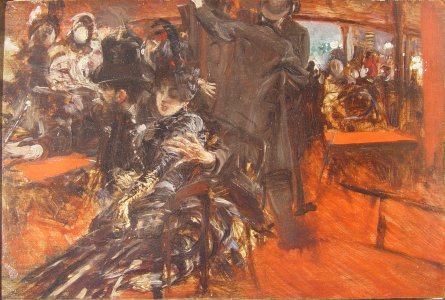Voies et modes d'un peintre. Entre le dessin et l'inachevé dans la technique de Giovanni Boldini
Résumé
The technique of the famous Italian painter Giovanni Boldini (Ferrara, 1842 – Paris, 1931) was investigated in the frame of a broad analytical campaign carried out on about 70 works painted by this artist, of different periods, belonging to private collections. The paper illustrates some important results deriving from Infrared Reflectographic images obtained by the author, regarding the underdrawing, changes and the re-use of canvases or wood panels previously painted by Boldini himself. The re-use and changes, in particular, are discussed in order to understand the so appreciated “unfinished” style in Boldini and its technique. His unfinished was sometimes due to re-use, sometimes to a deliberate construction. His characteristic underdrawing and its evolution during his career added interesting information to his graphic production, and the strategies he employed for building his composition were also clarified. Boldini sketched very quickly over the ground, but also directly on the unprepared wood in the panels, the colour, generally using the pencil. He was usually interested in where to place the masses, also using oval and circle lines, without needing a detailed underdrawing, managing to build details directly with paint, in the landscapes as in portraits.

Téléchargements
Publiée
Comment citer
Numéro
Rubrique
Licence
(c) Tous droits réservés Elephant & Castle 2023

Ce travail est disponible sous la licence Creative Commons Attribution 4.0 International .





